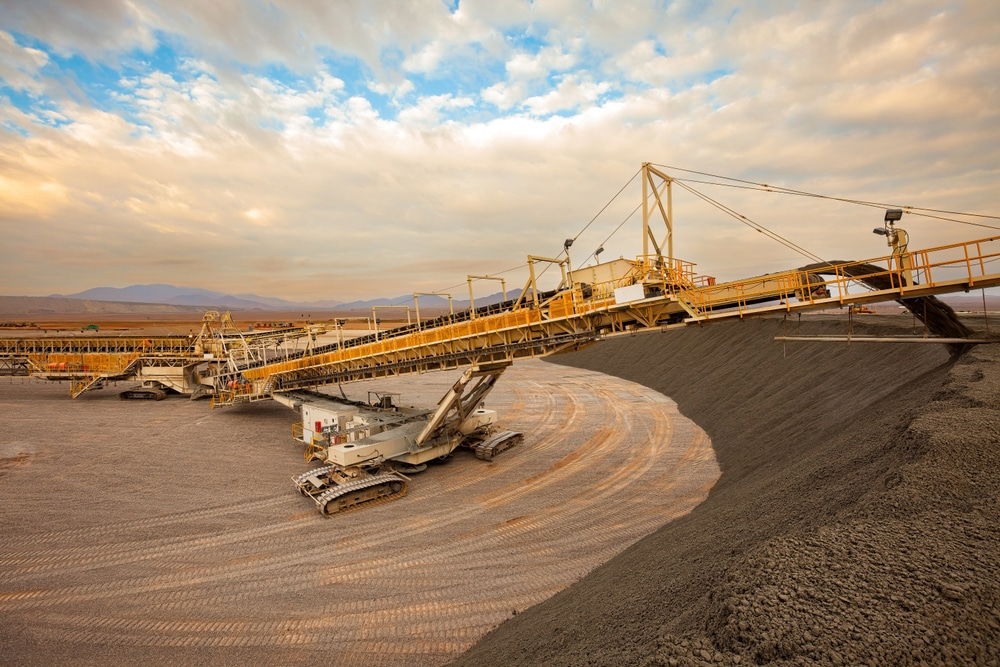
In recent weeks, the copper market has been experiencing significant volatility, with prices on the rise. A major factor driving this upward trend is the ongoing union strike at BHP’s Escondida mine in Chile, one of the world’s largest copper producers. This development has caught the attention of investors and industry stakeholders alike, highlighting the delicate balance between supply disruptions and commodity prices.
The Escondida Mine: A Strategic Asset
The Escondida mine, located in the Atacama Desert, is not just a significant asset for BHP but also a critical player in the global copper market. As the largest copper mine in the world by production volume, its operational status has a direct impact on copper supply and prices.
The mine produces a substantial portion of the world’s copper, and any disruptions in its operations can lead to significant fluctuations in copper prices. The current strike at Escondida underscores this reality, as labor disputes are impacting production and supply chains, contributing to the recent rise in copper prices.
The Union Strike: Causes and Implications
The union strike at Escondida began in early August and involves workers protesting against issues related to wages, working conditions, and contract negotiations. Labor disputes in mining operations are not uncommon, but their effects can be particularly pronounced in major production sites like Escondida.
Supply Disruptions: The strike has led to a reduction in copper output from Escondida, creating a supply shortfall in the global market. As copper is a key industrial metal used in various applications—from electronics to construction—any significant drop in supply can lead to increased prices.
Market Sentiment: The strike has heightened market uncertainty, leading to speculative trading and increased volatility in copper prices. Traders and investors are reacting to the potential for prolonged disruptions, driving prices higher in anticipation of future shortages.
Negotiation Dynamics: The strike also puts pressure on BHP and the union to reach a resolution. Prolonged negotiations or an extended strike could exacerbate supply issues and drive prices even higher. Conversely, a swift resolution might stabilize the market, but the current uncertainty keeps prices elevated.
Market Reactions and Forecasts
The rise in copper prices amid the Escondida strike has been notable, with prices climbing to levels not seen in several months. This uptick reflects both the immediate impact of reduced supply and the broader market sentiment regarding future copper availability.
Price Trends: Copper prices have seen a resurgence, with recent trading showing substantial increases. Analysts are closely monitoring the situation, as continued disruptions could drive prices even higher, while any resolution to the strike might lead to price corrections.
Global Supply Chain Impact: The strike at Escondida highlights the broader vulnerabilities in the global supply chain for essential commodities like copper. Companies and industries reliant on copper are adjusting their strategies and inventories in response to the increased costs and potential supply uncertainties.
Long-Term Implications: While the immediate impact is clear, the long-term implications of the strike will depend on how quickly a resolution is reached and how it affects overall production levels. The incident serves as a reminder of the intricate link between labor relations, supply chain dynamics, and commodity prices.
Conclusion
The ongoing union strike at BHP’s Escondida mine has had a pronounced effect on copper prices, underscoring the sensitivity of global commodities markets to supply disruptions. As negotiations continue and the situation develops, stakeholders will need to stay attuned to the evolving landscape of copper production and pricing.
In the meantime, the copper market remains volatile, with prices influenced by both the immediate effects of the strike and broader market expectations. For investors, industry players, and analysts, the key will be to navigate this uncertainty with a keen understanding of how labor disputes, supply disruptions, and market dynamics interplay to shape commodity prices.
